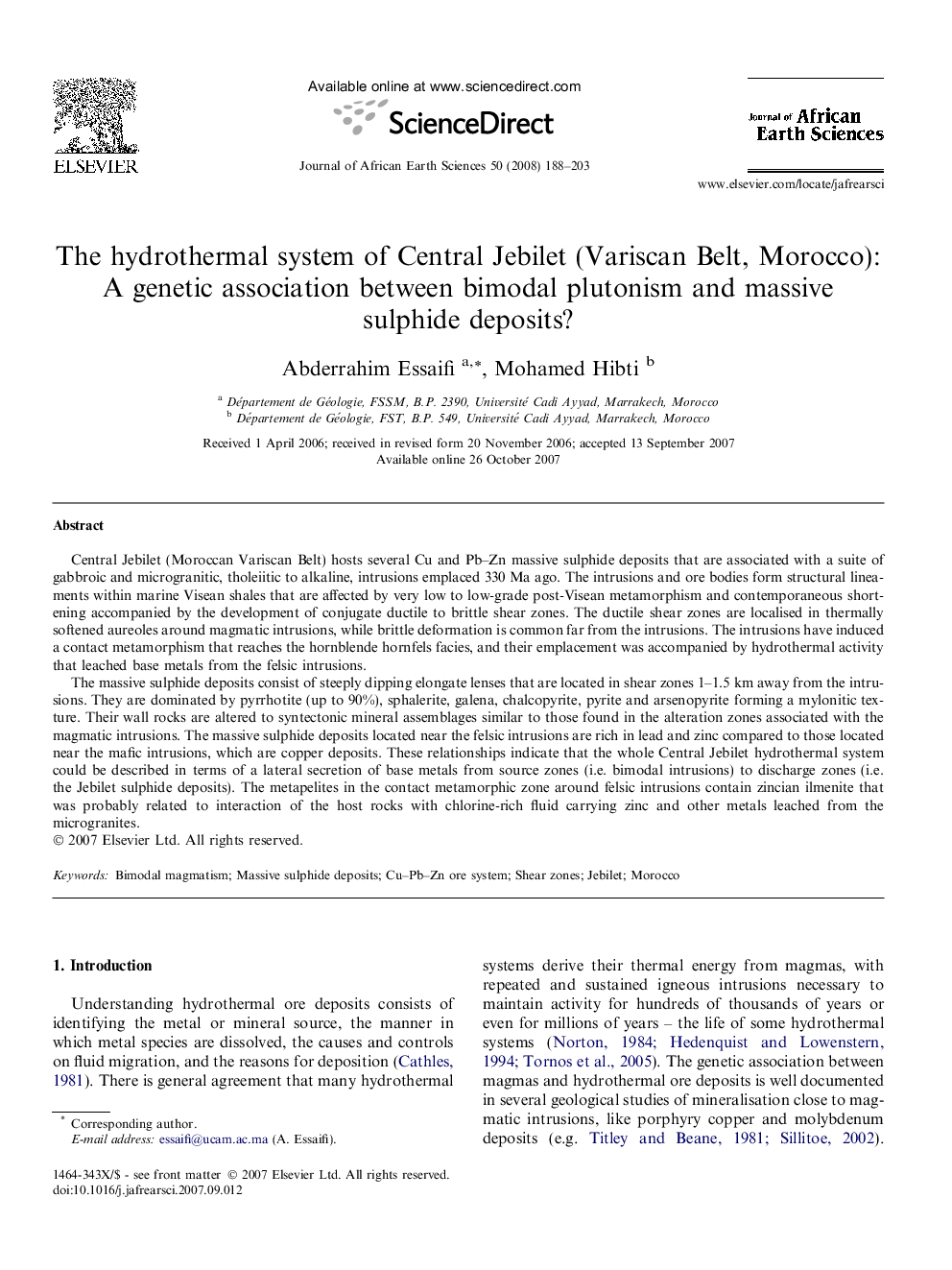| کد مقاله | کد نشریه | سال انتشار | مقاله انگلیسی | نسخه تمام متن |
|---|---|---|---|---|
| 4729655 | 1640257 | 2008 | 16 صفحه PDF | دانلود رایگان |

Central Jebilet (Moroccan Variscan Belt) hosts several Cu and Pb–Zn massive sulphide deposits that are associated with a suite of gabbroic and microgranitic, tholeiitic to alkaline, intrusions emplaced 330 Ma ago. The intrusions and ore bodies form structural lineaments within marine Visean shales that are affected by very low to low-grade post-Visean metamorphism and contemporaneous shortening accompanied by the development of conjugate ductile to brittle shear zones. The ductile shear zones are localised in thermally softened aureoles around magmatic intrusions, while brittle deformation is common far from the intrusions. The intrusions have induced a contact metamorphism that reaches the hornblende hornfels facies, and their emplacement was accompanied by hydrothermal activity that leached base metals from the felsic intrusions.The massive sulphide deposits consist of steeply dipping elongate lenses that are located in shear zones 1–1.5 km away from the intrusions. They are dominated by pyrrhotite (up to 90%), sphalerite, galena, chalcopyrite, pyrite and arsenopyrite forming a mylonitic texture. Their wall rocks are altered to syntectonic mineral assemblages similar to those found in the alteration zones associated with the magmatic intrusions. The massive sulphide deposits located near the felsic intrusions are rich in lead and zinc compared to those located near the mafic intrusions, which are copper deposits. These relationships indicate that the whole Central Jebilet hydrothermal system could be described in terms of a lateral secretion of base metals from source zones (i.e. bimodal intrusions) to discharge zones (i.e. the Jebilet sulphide deposits). The metapelites in the contact metamorphic zone around felsic intrusions contain zincian ilmenite that was probably related to interaction of the host rocks with chlorine-rich fluid carrying zinc and other metals leached from the microgranites.
Journal: Journal of African Earth Sciences - Volume 50, Issues 2–4, February 2008, Pages 188–203